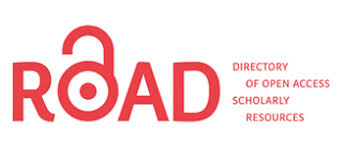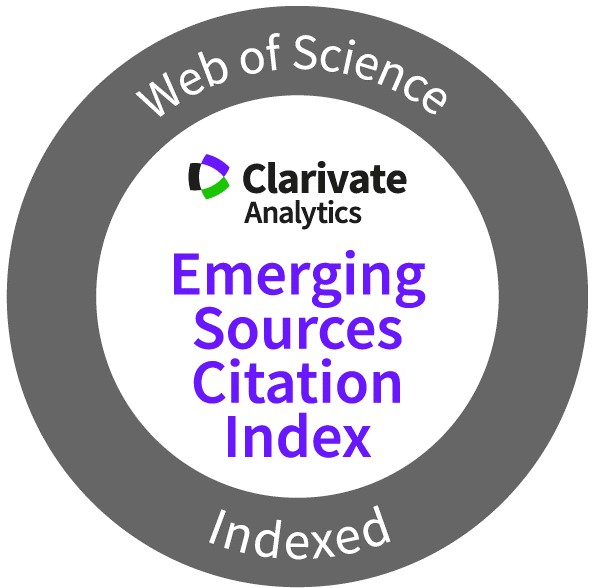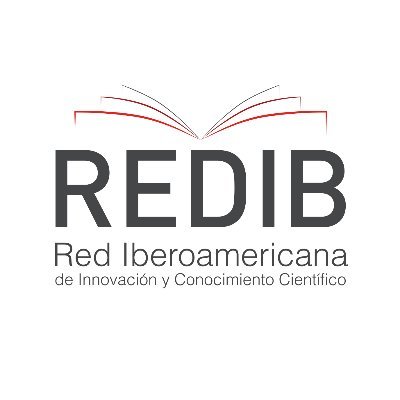Redes Sociodigitales, Mujeres Adolescentes y Trastornos de la Conducta Alimentaria
un panorama de estudio
Palabras clave:
Trastornos de la Conducta Alimentaria (TCA), Redes Sociodigitales (RRSS), Imagen corporal, Mujeres adolescentes, Perspectiva de géneroResumen
A partir de una revisión de 120 estudios entre 2008 y 2022, procedentes de 6 bases de datos, esta investigación documental tiene como propósito describir y analizar estudios sobre Trastornos de la Conducta Alimentaria (TCA) en mujeres adolescentes, y que incluyen a las Redes Sociodigitales (RRSS) como parte del contexto sociocultural de estos padecimientos. Asimismo, se problematiza la relación de las RRSS y los TCA. Las primeras, participan en la construcción de la imagen corporal; mientras, los segundos son reconocidos como un problema de salud pública. Por lo cual, el abordaje interdisciplinar se vuelve necesario. Los resultados indican la relación entre el tiempo, así como el uso de Internet y RRSS con el deseo de adelgazar y con los TCA. Lo anterior, especialmente en mujeres. No obstante, las RRSS pueden participar de diversas formas en lo que respecta a esta problemática de salud en la adolescencia. Además, las discrepancias entre el género y elementos socioculturales son necesarios de considerar en este tema. Finalmente, se exhibe la deficiencia en estudios situados en Latinoamérica, por lo que resulta pertinente la investigación sobre TCA y RRSS en mujeres adolescentes tomando en cuenta los elementos sociales, culturales y étnicos particulares de dicha posición geográfica.
Citas
Asociación Americana de Psiquiatría (2014). Manual diagnóstico y estadístico de los trastornos mentales (DSM-5), 5a Edición. Editorial Médica Panaméricana. (Original publicado en 2013).
Ávila, M. de J., & Jáuregui, J. (2015). Dietary risk behaviors among adolescents and young people of Nuevo León. Revista Mexicana de Trastornos Alimentarios, 6(1), 1–12. https://doi.org/10.1016/j.rmta.2015.06.002
Blázquez, M., Gómez, D., Frontaura, I., Camacho, A., Rodríguez, F. y Toriz, H. (2018). Uso de Internet por los adolescentes en la búsqueda de información sanitaria. Atención Primaria, 50(4), pp. 547-552. https://doi.org/10.1016/j.aprim.2017.06.005
Boepple, L., & Thompson, J. K. (2014). A content analysis of healthy living blogs: Evidence of content thematically consistent with dysfunctional eating attitudes and behaviors. International Journal of Eating Disorders, 47(4), 362–367. https://doi.org/10.1002/eat.22244
Bohrer, B. K., Foye, U., & Jewell, T. (2020). Recovery as a process: Exploring definitions of recovery in the context of eating-disorder-related social media forums. International Journal of Eating Disorders, 53(8), 1219–1223. https://doi.org/10.1002/eat.23218
Borzekowski, D. L. G., Schenk, S., Wilson, J. L., & Peebles, R. (2010). e-Ana and e-Mia: A Content Analysis of Pro–Eating Disorder Web Sites. American Journal of Public Health, 100(8), 1526–1534. https://doi.org/10.2105/ajph.2009.172700
Carrillo, V. y Del Moral, A. (2013) Influencia de los factores que definen el modelo estético corporal en el bienestar de las mujeres jóvenes afectadas o no afectadas por anorexia y bulimia. Saúde e Sociedade, 22(2), pp.468-484. http://dx.doi.org/10.1590/S0104-12902013000200017
Cortez, D., Gallegos, M., Jiménez, T., Martínez, P., Saravia, S., Cruzat-Mandich, C., Díaz-Castrillón, F., Behar, R., & Arancibia, M. (2016). Influence of sociocultural factors on body image from the perspective of adolescent girls. Revista Mexicana de Trastornos Alimentarios, 7(2), 116–124. https://doi.org/10.1016/j.rmta.2016.05.001
Dakanalis, A., Carrà, G., Calogero, R., Fida, R., Clerici, M., Zanetti, M. A., & Riva, G. (2014). The developmental effects of media-ideal internalization and self-objectification processes on adolescents’ negative body-feelings, dietary restraint, and binge eating. European Child & Adolescent Psychiatry, 24(8), 997–1010. https://doi.org/10.1007/s00787-014-0649-1
Danthinne, E. S., Giorgianni, F. E., & Rodgers, R. F. (2020). Labels to prevent the detrimental effects of media on body image: A systematic review and meta-analysis. International Journal of Eating Disorders, 53(5), 377–391. https://doi.org/10.1002/eat.23242
De Llanos, E. (1994). La corporalidad adolescente. En Aguirre, Á. Psicología de la Adolescencia (1a edición). (pp. 65- 75). Marcombo.
Eichhorn, K. C. (2008). Soliciting and providing social support over the internet: An investigation of online eating disorder support groups. Journal of Computer-Mediated Communication, 14(1), 67–78. https://doi.org/10.1111/j.1083-6101.2008.01431.x
Eikey, E. V., & Reddy, M. C. (2017, mayo). “It’s definitely been a journey”: A qualitative study on how women with eating disorders use weight loss apps [conferencia]. Conference on Human Factors in Computing Systems - Proceedings, 642–654. https://doi.org/10.1145/3025453.3025591
Engeln, R. (2017). Enfermas de belleza: Cómo la obsesión de nuestra cultura por el aspecto físico perjudica a niñas y mujeres (G. Lelli, ed.). Editorial HarperCollins Español. Impreso en Estados Unidos, Nueva York (primera edición en 2017).
Engeln, R., Loach, R., Imundo, M., & Zola, A. (2020). Compared to Facebook, Instagram use causes more appearance comparison and lower body satisfaction in college women. Body Image, 34, 38–45. https://doi.org/10.1016/j.bodyim.2020.04.007
Fardouly, J., & Vartanian, L. R. (2014). Negative comparisons about one’s appearance mediate the relationship between Facebook usage and body image concerns. Body Image, 12(1), 82–88. https://doi.org/10.1016/j.bodyim.2014.10.004
Ferrari, R. (2015). Writing narrative style literature reviews. Medical Writing, 24(4), 230–235. https://doi.org/10.1179/2047480615z.000000000
Franko, D. L., Coen, E. J., Roehrig, J. P., Rodgers, R. F., Jenkins, A., Lovering, M. E., & Cruz, S. D. (2012). Considering J.Lo and Ugly Betty: A qualitative examination of risk factors and prevention targets for body dissatisfaction, eating disorders, and obesity in young Latina women. Body Image, 9(3), 381–387. https://doi.org/10.1016/j.bodyim.2012.04.003
Fredrickson, B. L., & Roberts, T.-A. (1997). Objectification Theory: Toward Understanding Women’s Lived Experiences and Mental Health Risks. Psychology of Women Quarterly, 21(2), 173–206. https://doi.org/10.1111/j.1471-6402.1997.tb00108.x
Gerbasi, M. E., Richards, L. K., Thomas, J. J., Agnew-Blais, J. C., Thompson-Brenner, H., Gilman, S. E., & Becker, A. E. (2014). Globalization and eating disorder risk: Peer influence, perceived social norms, and adolescent disordered eating in Fiji. International Journal of Eating Disorders, 47(7), 727–737. https://doi.org/10.1002/eat.22349
Ghaznavi, J., & Taylor, L. D. (2015). Bones, body parts, and sex appeal: An analysis of #thinspiration images on popular social media. Body Image, 14, 54–61. https://doi.org/10.1016/j.bodyim.2015.03.00
Guevara, R. (2016). El estado del arte en la investigación: ¿análisis de los conocimientos acumulados o indagación por nuevos sentidos?. Revista Folios, (44), pp. 165-179. https://www.redalyc.org/articulo.oa?id=345945922011
Guirao-Goris. J. (2015). Utilidad y tipos de revisión de literatura. Ene, 9(2). pp. 1-13. https://dx.doi.org/10.4321/S1988-348X2015000200002
Herrick, S. S. C., Hallward, L., & Duncan, L. R. (2021). “This is just how I cope”: An inductive thematic analysis of eating disorder recovery content created and shared on TikTok using #EDrecovery. International Journal of Eating Disorders, 54(4), 516–526. https://doi.org/10.1002/eat.23463
Hoffmann, S., & Warschburger, P. (2019). Prospective relations among internalization of beauty ideals, body image concerns, and body change behaviors: Considering thinness and muscularity. Body Image, 28, pp. 159–167. https://doi.org/10.1016/j.bodyim.2019.01.011
Hogue, J., & Mills, J. (2019). The effects of active social media engagement with peers on bodyimage in young women. Body image, 28. pp. 1-5. https://doi.org/10.1016/j.bodyim.2018.11.002
Holland, G., & Tiggemann, M. (2016). A systematic review of the impact of the use of social networking sites on body image and disordered eating outcomes. Body Image, 17, 100–110. https://doi.org/10.1016/j.bodyim.2016.02.008
Holland, G., & Tiggemann, M. (2017). “Strong beats skinny every time”: Disordered eating and compulsive exercise in women who post fitspiration on Instagram. International Journal of Eating Disorders, 50(1), pp. 76–79. https://doi.org/10.1002/eat.22559
Holmes, S., Drake, S., Odgers, K., & Wilson, J. (2017). Feminist approaches to Anorexia Nervosa: a qualitative study of a treatment group. Journal of eating disorders, 5, 36. pp. 1-15. https://doi.org/10.1186/s40337-017-0166-y
Hummel, A. C., & Smith, A. R. (2014). Ask and you shall receive: Desire and receipt of feedback via Facebook predicts disordered eating concerns. International Journal of Eating Disorders, 48(4), 436–442. https://doi.org/10.1002/eat.22336
Ioannidis, K., Taylor, C., Holt, L., Brown, K., Lochner, C., Fineberg, N. A., Corazza, O., Chamberlain, S. R., Roman-Urrestarazu, A., & Czabanowska, K. (2021). Problematic usage of the internet and eating disorder and related psychopathology: A multifaceted, systematic review and meta-analysis. Neuroscience and Biobehavioral Reviews, 125, pp. 569–581. https://doi.org/10.1016/j.neubiorev.2021.03.005
Izydorczyk, B., Sitnik-Warchulska, K., Lizińczyk, S., & Lipowska, M. (2020). Socio-Cultural Standards Promoted by the Mass Media as Predictors of Restrictive and Bulimic Behavior. Frontiers in psychiatry, 11. pp. 1-14. https://doi.org/10.3389/fpsyt.2020.00506
Keery, H., van den Berg, P., & Thompson, J. K. (2004). An evaluation of the Tripartite Influence Model of body dissatisfaction and eating disturbance with adolescent girls. Body image, 1(3), 237–251. https://doi.org/10.1016/j.bodyim.2004.03.001
Kimber, M., Couturier, J., Georgiades, K., Wahoush, O., & Jack, S. M. (2014). Ethnic Minority Status and Body Image Dissatisfaction: A Scoping Review of the Child and Adolescent Literature. Journal of Immigrant and Minority Health, 17(5), 1567–1579. https://doi.org/10.1007/s10903-014-0082-z
Kwan, M. Y., Haynos, A. F., Blomquist, K. K., & Roberto, C. A. (2018). Warning labels on fashion images: Short- and longer-term effects on body dissatisfaction, eating disorder symptoms, and eating behavior. International Journal of Eating Disorders, 51(10), 1153–1161. https://doi.org/10.1002/eat.22951
Limniou, M., Mahoney, C., & Knox, M. (2021). Is Fitspiration the Healthy Internet Trend It Claims to Be? A British Students’ Case Study. International Journal of Environmental Research and Public Health, 18(4), pp. 1-11. https://doi.org/10.3390/ijerph18041837
Lladó, G., González-Soltero, R. y Blanco Fernández de Valderrama, M. J. (2017). Anorexia y bulimia nerviosas: difusión virtual de la enfermedad como estilo de vida. Nutrición Hospitalaria, 34(3), pp. 693-701.https://doi.org/10.20960/nh.469
Lonergan, A. R., Bussey, K., Fardouly, J., Griffiths, S., Murray, S. B., Hay, P., Mond, J., Trompeter, N., & Mitchison, D. (2020). Protect me from my selfie: Examining the association between photo-based social media behaviors and self-reported eating disorders in adolescence. International Journal of Eating Disorders, 53(5), 485–496. https://doi.org/10.1002/eat.23256
Losada, A.V., Leonardelli, E. y Magliola, M. (2015). Influencia sociocultural y los trastornos de la conducta alimentaria en adolescentes. Revista Electrónica de Psicología Iztacala, 18(1). pp. 380-416. https://repositorio.uca.edu.ar/handle/123456789/8934
Mabe, A. G., Forney, K. J., & Keel, P. K. (2014). Do you “like” my photo? Facebook use maintains eating disorder risk. International Journal of Eating Disorders, 47(5), 516–523. https://doi.org/10.1002/eat.22254
Manago, A. M., Ward, L. M., Lemm, K. M., Reed, L., & Seabrook, R. (2015). Facebook Involvement, Objectified Body Consciousness, Body Shame, and Sexual Assertiveness in College Women and Men. Sex Roles, 72. pp. 1-14. https://doi.org/10.1007/s11199-014-0441-1
McCaig, D., Bhatia, S., Elliott, M. T., Walasek, L., & Meyer, C. (2018). Text-mining as a methodology to assess eating disorder-relevant factors: Comparing mentions of fitness tracking technology across online communities. International Journal of Eating Disorders, 51(7), 647–655. https://doi.org/10.1002/eat.22882
McCracken, A. B. (2014). The beauty trade: Youth, gender, and fashion globalization. Oxford University Press.
McLean, S. A., Paxton, S. J., Wertheim, E. H., & Masters, J. (2015). Photoshopping the selfie: Self photo editing and photo investment are associated with body dissatisfaction in adolescent girls. International Journal of Eating Disorders, 48(8), 1132–1140. https://doi.org/10.1002/eat.22449
Merello, M. y Oliva, P. (2012). La obesidad y su relación con las patologías periodontales: una revisión narrativa. International Journal of Odontostomatology, 6(2), 235-239. https://dx.doi.org/10.4067/S0718-381X2012000200019
Moessner, M., Feldhege, J., Wolf, M., & Bauer, S. (2018). Analyzing big data in social media: Text and network analyses of an eating disorder forum. International Journal of Eating Disorders, 51(7), 656–667. https://doi.org/10.1002/eat.22878
Nutley, S. K., Falise, A. M., Henderson, R., Apostolou, V., Mathews, C. A., & Striley, C. W. (2021). Impact of the COVID-19 Pandemic on Disordered Eating Behavior: Qualitative Analysis of Social Media Posts. JMIR mental health, 8(1). https://doi.org/10.2196/26011
Oksanen, A., Garcia, D., Sirola, A., Nasi, M., Kaakinen, M., Keipi, T., & Rasanen, P. (2015). Pro-Anorexia and Anti-Pro Anorexia Videos on YouTube: Sentiment Analysis of User Responses. Journal of Medical Internet Research. 17(11). https://doi.org/10.2196/jmir.5007
Opara, I., & Santos, N. (2019). A Conceptual Framework Exploring Social Media, Eating Disorders, and Body Dissatisfaction Among Latina Adolescents. Hispanic journal of behavioral sciences, 41(3), 363–377. https://doi.org/10.1177/0739986319860844
Papalia, D. y Martorell, G. (2015). Desarrollo humano (13ª ed.). Editorial McGraw-Hill Interamericana.
Peter, C., & Brosius, H. B. (2021). Die Rolle der Medien bei Entstehung, Verlauf und Bewältigung von Essstörungen [The role of the media in the development, course, and management of eating disorders]. Bundesgesundheitsblatt, Gesundheitsforschung, Gesundheitsschutz, 64(1), 55–61. https://doi.org/10.1007/s00103-020-03256-y
Prado, C. (1994) El desarrollo físico en la adolescencia. En Aguirre, Á. Psicología de la Adolescencia (1a edición). (pp. 43-64). Marcombo.
Rodgers, R. F., Lombardo, C., Cerolini, S., Franko, D. L., Omori, M., Fuller‐Tyszkiewicz, M., & Guillaume, S. (2020). The impact of the COVID ‐19 pandemic on eating disorder risk and symptoms. International Journal of Eating Disorders., 53(7). pp. 1-5. https://doi.org/10.1002/eat.23318
Saffran, K., Fitzsimmons-Craft, E. E., Kass, A. E., Wilfley, D. E., Taylor, C. B., & Trockel, M. (2016). Facebook usage among those who have received treatment for an eating disorder in a group setting. The International journal of eating disorders, 49(8), 764–777. https://doi.org/10.1002/eat.22567
Saunders, J. F., Eaton, A. A., & Aguilar, S. (2020). From self(ie)-objectification to self-empowerment: The meaning of selfies on social media in eating disorder recovery. Computers in Human Behavior, 111. pp. 1-9. https://doi.org/10.1016/j.chb.2020.106420
Silva, C., Millán Díaz, B. A., & González Alcántara, K. E. (2017). Gender role and eating attitudes in adolescents from two different socio-cultural contexts: Traditional vs. non-traditional. Revista Mexicana de Trastornos Alimentarios, 8(1), 40–48. https://doi.org/10.1016/j.rmta.2016.12.002
Striegel-Moore, R. H., Rosselli, F., Perrin, N., DeBar, L., Wilson, G. T., May, A., & Kraemer, H. C. (2009). Gender differences in the prevalence of eating disorder symptoms. International Journal of Eating Disorders, 42, pp. 471–474. http://dx.doi.org/10.1002/eat.20625
Sugimoto, N., Nishida, A., Ando, S., Usami, S., Toriyama, R., Morimoto, Y., Koike, S., Yamasaki, S., Kanata, S., Fujikawa, S., Furukawa, T. A., Sasaki, T., Hiraiwa-Hasegawa, M., & Kasai, K. (2020). Use of social networking sites and desire for slimness among 10-year-old girls and boys: A population-based birth cohort study. International Journal of Eating Disorders, 53(2), 288–295. https://doi.org/10.1002/eat.23202
Syed-Abdul, S., Fernandez-Luque, L., Jian, W-S., Li, Y-C., Crain, S., Hsu, M-H., Wang, Y-C., Khandregzen, D., Chuluunbaatar, E., Nguyen, P.A., & Liou, D. (2013). Misleading Health-Related Information Promoted Through Video-Based Social Media: Anorexia on YouTube. Journal of medical internet research, 15(2). https://doi.org/10.2196/jmir.2237
Tiggemann, M., & Slater, A. (2013). NetGirls: The internet, facebook, and body image concern in adolescent girls. International Journal of Eating Disorders, 46(6), 630–633. https://doi.org/10.1002/eat.22141
Tiggemann, M. (2013). Objectification theory: Of relevance for eating disorder researchers and clinicians? Clinical Psychologist, 17(2), 35–45. https://doi.org/10.1111/cp.12010
Tiggemann, M., & Zaccardo, M. (2015). “Exercise to be fit, not skinny”: The effect of fitspiration imagery on women’s body image. Body Image, 15, 61–67. https://doi.org/10.1016/j.bodyim.2015.06.003
Tiggemann, M., & Slater, A. (2016). Facebook and body image concern in adolescent girls: A prospective study. International Journal of Eating Disorders, 50(1), 80–83. https://doi.org/10.1002/eat.22640
Turja, T., Oksanen, A., Kaakinen, M., Sirola, A., Kaltiala-Heino, R., & Räsänen, P. (2017). Proeating disorder websites and subjective well-being: A four-country study on young people. International Journal of Eating Disorders, 50(1), 50–57. https://doi.org/10.1002/eat.22589
Vaccaro, C. M., Guarino, G., Conte, D., Ferrara, E., Ragione, L. D., & Bracale, R. (2021). Social networks and eating disorders during the Covid-19 pandemic. Open medicine (Warsaw, Poland), 16(1), 1170–1174. https://doi.org/10.1515/med-2021-0291
Wilksch, S. M., O’Shea, A., Ho, P., Byrne, S., & Wade, T. D. (2019). The relationship between social media use and disordered eating in young adolescents. International Journal of Eating Disorders, 53(1). 96-106. https://doi.org/10.1002/eat.23198
Zenone M., Ow N., & Barbic S. (2021). TikTok and public health: a proposed research agenda. BMJ Global Health, 6. 1-3. http://dx.doi.org/10.1136/bmjgh-2021-007648
Zillmer, J. y Díaz-Medina, B. (2018). Revisión Narrativa: Elementos que la constituyen y sus potencialidades. Journal of Nursing and Health, 8(1). pp.1-2. http://dx.doi.org/10.15210/jonah.v8i1.13654
Publicado
Cómo citar
Número
Sección
Derechos de autor 2023 Ana Sofía Apodaca Cabrera

Esta obra está bajo una licencia internacional Creative Commons Atribución-NoComercial-CompartirIgual 4.0.
Los autores que publican en esta revista están de acuerdo con los siguientes términos:
- Los autores conservan los derechos de autor y garantizan a la revista el derecho de ser la primera publicación del trabajo al igual que licenciado bajo una Creative Commons Attribution License que permite a otros compartir el trabajo con un reconocimiento de la autoría del trabajo y la publicación inicial en esta revista.
- Los autores pueden establecer por separado acuerdos adicionales para la distribución no exclusiva de la versión de la obra publicada en la revista (por ejemplo, situarlo en un repositorio institucional o publicarlo en un libro), con un reconocimiento de su publicación inicial en esta revista.
- Se permite y se anima a los autores a difundir sus trabajos electrónicamente (por ejemplo, en repositorios institucionales o en su propio sitio web) antes y durante el proceso de envío, ya que puede dar lugar a intercambios productivos, así como a una citación más temprana y mayor de los trabajos publicados (Véase The Effect of Open Access) (en inglés).










